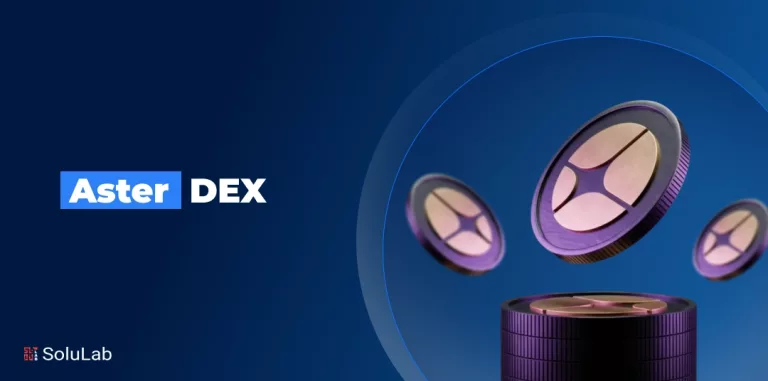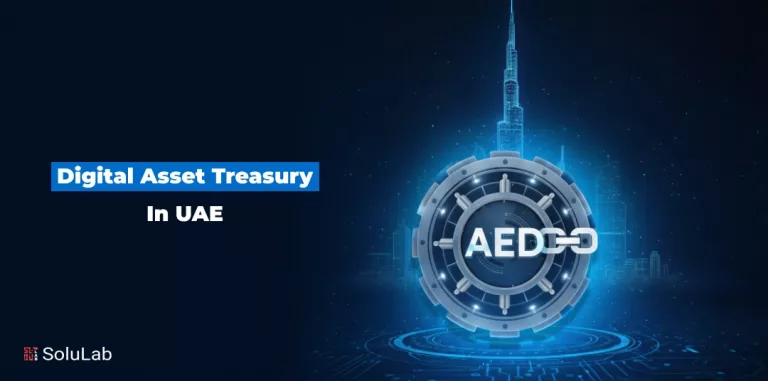Many things are so familiar that our minds often opt to overlook them. This is true of interoperability, not only of blockchains but of a wide range of other technologies. To begin, consider the following common objects: mobile phones, laptops, and email.
If just two email systems based on two separate infrastructures were not compatible, emailing would be half as efficient and influential as it is now.
For example, what if you couldn’t send an email from a Gmail account to an Outlook account? Emails would never have made it this far into the future.
The same holds for mobile and computer operating systems. What if you couldn’t make a call to an Android user from your iOS device? What if two Zoom users on Windows and macOS couldn’t video call each other? What if you couldn’t transfer money from the Android version of Google Pay to the iOS version? Users would have had a tough time if there had been no compatibility.
Deep understanding of Blockchain interoperability
This concept must be understood in terms of application and technology and terms of commercial, security, and legal concerns (see Part III). To fully realize the promise of Distributed Ledger Technologies (DLT), interoperability must be prioritized.
Breaking down data silos and walled gardens of data and apps are just a few of the numerous advantages offered by this new technology. However, these advantages will not be realized without compatibility across various blockchain protocols, Blockchain, and other new and legacy technologies, which may leave us with the same issues we started with. Interoperability of blockchains or distributed ledgers is a difficult and time-consuming task. As we get closer to the operationalization of this new technology, interoperability will emerge as a critical problem.
The core shared ledger’s many kinds, and designs may be generally categorized as permissioned or permissionless blockchain networks. Institutions and organizations have been investigating DLT technology protocols based on their own needs and the requirements of the challenge statement at hand. And, as numerous blockchain networks emerge, it is increasingly essential for these various technologies to interact not just with traditional systems but also with different distributed ledgers. This may be better readily appreciated by presenting a few examples: Central Banking and Electronic Payments: Several central banks have started to explore using Blockchain for practical interoperability.
Challenges faced in Blockchain Interoperability
Developers often disregard standards while creating a blockchain to have greater flexibility. However, this may lead to interoperability and communication problems. The most significant Blockchain interoperability problem is many blockchain networks with varying characteristics such as consensus models, smart contract capabilities, and transaction methods. Several standardization initiatives are underway to address this. To guarantee interoperability, IBM and Microsoft are using an established GS1 standard. Comparatively, The Enterprise Ethereum Alliance has created a standard from the ground up. It happens to be the Ethereum Blockchain for companies.
Blockchain interoperability endeavors can be divided into two groups:
Open protocols
Standardized protocols allow blockchains to communicate without the need for a third party or trust procedures. The Atomic swap is the most well-known open protocol.
Multi-chain frameworks
These are more sophisticated than open protocols and are referred to as the “internet of blockchains” at times. Blockchains may become part of a standardized ecosystem and exchange data and value by connecting to a framework.
Why Do Businesses Want Blockchains to Work Together?
According to industry experts such as IBM, the most important barrier to blockchain adoption is a lack of clarity regarding standards and governance. The industry has failed to create well-defined data standards that trade partners understand and accept. Even though traditional standards-making organizations have updated interoperability criteria for companies utilizing different blockchain systems, there is no standardization of identity, data, or events. Creating these standards may increase trust in the technology, propelling the industry forward and boosting adoption.
Some argue that standards should not be established until the technology has reached a certain level of maturity. Moving too quickly to standards may suffocate future innovation. Moreover, standards may unduly shape the kind of innovations that arise or prevent certain problems from even being addressed, much alone answered.
Businesses are also worried about decreased switching costs and barriers. Nobody wants to be locked into the wrong solution, especially given the technology’s infancy. However, businesses want switching costs to be as low as possible to switch solutions as needed and interoperate with systems. A hedging approach has been adopted by many businesses to provide flexibility. They’ve invested money in various initiatives since no one is knowledgeable enough to choose a clear winner.
Rather than doubling down on one solution, many businesses are still gathering data and keeping their fingers on the pulse of many blockchain applications. Companies may profit from doubling down on one option. A company may focus its efforts and resources by committing heavily to a single application.
Achieving interoperability
When it comes to moving Blockchain forward, there are likely to be more obstacles to overcome than compatibility. We believe that organizations should continue to focus on solving these problems and demonstrating actual economic benefit as technology develops to meet the needs of specific industrial use cases. This will have a greater impact on the adoption of blockchain technology shortly.
Several working groups, such as The Dutchess Project by Hyperledger, have been established to encourage connectivity across isolated blockchain networks. We provide some suggestions to assist in accomplishing this goal.
Which projects are focused on solving this issue?
Polkadot
Its network comprises parachains, which are independent blockchains that have been incorporated into the Polkadot ecosystem. The main connection between these parachains is provided by a relay chain. A parachain may be distinct in its own right and disperse transactions across the ecosystem. Chains that join the ecosystem must convert to the Polkadot mechanism for consensus, although having full control over the construction and functioning. Polkadot is distinguished by the fact that it enables not just transactions but also data exchange.
Cosmos
Tendermint Byzantine is a well-known name in blockchain interoperability, and it uses the fault tolerance protocol. The Cosmos Network is connected to Zones, which are self-contained blockchains. Thanks to the Cosmos Hub, these zones may interact with one another, and new ones can be connected. The capacity for zones to maintain their consensus process is one of Cosmos’ distinctive features.
Ark
Its mission is to provide an adaptable and scalable blockchain interoperability solution by automating new blockchains within the ecosystem. These can be created in only a few minutes. Java, Swift, Ruby, and Python are among the programming languages supported by Ark.
Wanchain
A decentralized exchange protocol that enables data transfer between blockchains and data exchange across ledgers. Their ecosystem enables the trade of digital assets between blockchains by using cross-chain smart contracts.
Interoperable blockchain applications
Let’s look at some of the applications that take advantage of blockchain interoperability:
Digix
They utilize blockchain technology to represent actual gold in the form of DGX tokens. On Ethereum, one DGX token is equivalent to one gram of gold. These tokens may be traded and transferred in an open market. The immutable ledger improves security, and the smart contract platform eliminates the danger of human error and fraud.
Regen Network
Using Blockchain to create a systematic multi-stakeholder, market-driven method allows verifiable ecological outcomes through an accounting ledger capable of rewarding ecological regeneration via smart contracts.
E-Money
The most current advancements in blockchain technology are being used to generate interest-bearing, currency-backed tokens, resulting in the next generation of money. In addition, interoperability on the Blockchain ensures long-term viability via proof-of-stake consensus, scalability for real-time global payments, and open access without gatekeepers.
Benefits of Blockchain Interoperability in Healthcare
The healthcare system’s failure to share and act on data is a high-profile issue that has hindered service delivery for years. For years, the commercial, public, and government sectors have tried in vain to solve the problem.
To transfer large quantities of data between institutions, the healthcare sector increasingly relies on centralized server infrastructure. The drawback of this method is that no one has control over data while it is in transit, which creates security issues.
Interoperability is a significant issue in the healthcare industry, with studies indicating that 86% of providers cannot share critical healthcare information readily. While most manufacturers have created interoperability solutions, the vast majority of them only work inside a single ecosystem. Developing a system that enables the smooth transfer of healthcare data throughout the whole sector is often expensive.
As a consequence, better blockchain interoperability techniques must be prioritized to remove any healthcare-related issues.
Among the challenges that healthcare faces in its quest for universal interoperability, Blockchain is slowly emerging as a technology that may help alleviate some of the pain points.
Present Scenario of Blockchain Interoperability in Healthcare
Governance is the most significant barrier to blockchain interoperability in the healthcare sector. Such concepts will only acquire traction if the industry fails to agree on governance structures.
Governance frameworks must be agreed upon by the whole sector, with a focus on interoperability standards. While there has been considerable progress in this area, it may take some time to complete. In addition, industry players will need to evaluate several blockchain-based healthcare systems to decide which one best fits their needs.
Blockchain interoperability solutions for the sector have been developed by vendors such as PakitDok, Change Healthcare, and Gem.
Trustless bridges: The Holy Grail for blockchain interoperability?
Blockchain bridges, as the name suggests, are constructed to cross blockchains and enable communication. This technique addresses the problem of interoperability between two distinct protocols. Users may make use of the advantages of both blockchains by using trustless bridges.
The “burn-and-mint” method governs these bridges in general. Tokens do not leave their respective blockchains during the transaction, according to this. The token is burnt or locked on its Blockchain, while its counterpart is minted or produced on a different blockchain. This approach guarantees a steady supply of tokens and minimizes volatility.
Blockchain bridges are classified into two types: federated and trustless. The former is a private and more centralized project that requires specific conditions before the bridge may be utilized. On the other hand, trustless bridges function in a decentralized environment: Trustless bridge validators, like Bitcoin and Ether (ETH) miners, are compensated for maintaining the bridges. Furthermore, trustless bridges operate on mathematical facts and are free of human mistakes or corruption.
Trustless bridges provide several benefits in addition to their inherent openness. They allow tokens to communicate with one another across networks. Ethereum may utilize this feature to dump transactions to a different blockchain. Furthermore, trustless bridges assist in minimizing congestion in blockchains with large transaction volumes, giving users — particularly DApp developers — a smooth transaction experience.
Trustless bridges and open finance
The use of trustless bridges is an efficient method for blockchains to develop in tandem. It also serves as a strong incentive for developers to create DeFi apps that promote the vision of an open financial system. Trustless bridges bring in a new age of interoperability, eventually unlocking new value for all market players.
The possibility for collaboration between DeFi platforms and centralized banks arises as a result of trustless bridges. A peer-to-peer banking system that capitalizes on the ease of conventional banking arrangements is a beacon of hope provided by trustless bridges.
Conclusion
The introduction of interoperable solutions may radically alter current views about Blockchain. It will be an essential step in convincing networks that the smooth flow of data is critical to the overall market’s success.
Interoperability is anticipated to become a significant game-changer for the blockchain sector as greater interoperability across blockchain protocols is expected in the future years. We may already witness successful cross-blockchain initiatives this year.
Blockchain seems to be on the verge of broad acceptance and implementation.
Quick Read: Blockchain and Healthcare: Potential and Opportunities




